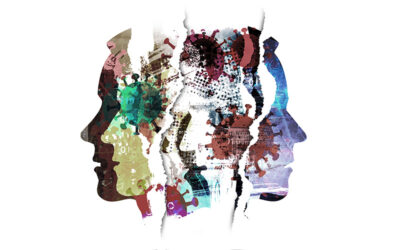You go for your yearly medical check up. The doctor listens to your heart and feels your pulse. Your blood is drawn and your blood pressure is taken. Looking at the sphygmomanometer (blood pressure cuff), she reports a number: 120/80. “Perfect”, she says and when your lab results come in showing all of your serum levels falling within the normal range, you are declared healthy and told to return in a year for another evaluation.
In a world of spectra and averages, we strive to fall within parameters established through the most current medical research; the closer we are to the mean, the more satisfied we are, and the healthier we believe ourselves to be. These numbers provide us with important information, guideposts that alert us to the presence or potential development of disease processes. But they are approximations, reached through comparisons with idealized means, not true and accurate representations of who we are.
How do we establish these numbers, these “normals”? In her provocative book “Medicine and Culture”, Lynn Payer compares definitions of health and disease in four countries—The United States, England, France, and Germany. One would think that among these modern, industrialized nations, diagnoses and treatment would be the same. In fact, there are great variations, most of which can be attributed to historical, cultural, and political (e.g., health insurance system) differences. Fundamentals such as “normal” blood pressure and the prevalence of particular diagnoses must be understood within socio-cultural frameworks. For example, in Germany, where there is a powerful romantic tradition, a blood pressure on the lower end of the spectrum, a reading of 90/60, one that would be celebrated by an American doctor, might be of concern to a German MD who could feel that ones heart is not functioning properly, that it is weak, and perhaps an indicator of the need for love. For a spinal condition, an American doctor might recommend a surgical procedure while an English doctor might opt for a more conservative physiotherapeutic approach. The reason: in the US, where doctors are reimbursed on a “fee for service” basis, the surgical procedure will pay very well, whereas the English doctor, who is being paid a regular monthly salary, has no such financial incentive.
According to Payer, ideas about health and disease are strongly influenced by factors beyond “objective” medical research. Medicine is an art and a science, a business and a cultural artifact. In my own practice I have had patents describe their chronic headaches as normal, to be expected in today’s stressful environment. “I am here for my back,” they tell me. “I can’t work because of the pain. The headaches I can live with”. So in the post-industrial American world, where people commonly work 40-50 hours per week in front of computer screens, headaches have become so typical that their significance has shifted from pathology to nuisance, less a diagnosis than a natural byproduct of modern living. The norm gradually becomes normal.
To be fully assimilated, these ideas also require a narrative foundation upon which the world can be rationalized and constructed. Our contemporary socio-political narrative is largely rooted in a 19th century philosophy called positivism. According to this very modern belief system, science has the answers to all questions worth asking and that it is only through scientific method that human problems will be solved. This philosophy has become one of the pillars of modernity, supporting the framework through which we experience the world. It has been the melding of science and technology within this positivistic embrace that has led us to rely on numbers and machines as arbiters of “truth”, including that of the “true” state of our bodies. And out of this fertile ground has arisen our creation, “normal”.
However, these “normals” limit our understanding of health and disease. By definition, they tell us who we are as quantitative creatures, as averages, and to the extent that our bodily systems can be measured, categorized and compared, the pictures are accurate. But we quickly hit the limits of EMG’s, MRI’s, and C-T Scans. How do we measure purpose and meaning? How do we image the essential nature of our being? Yet our almost religious dedication to science and technology keeps us on this path. So the Dalai Lama giddily sits in meditation, connected to sensitive laboratory monitors and a computer printout is produced that describes his deep meditative state. What are the Dalai Lama’s blood pressure, serotonin, and EEG readings and what do they tell us about “normal”? How do these readings skew the curve for the rest of us? And what does the computer screen reveal about the experience of meditation?
We bend under this oppressive weight of average, of norms and normals. As we accept them with our health, we accept them in the rest of our lives. We internalize the cultural attempts to push us all into imaginary centers, whittling away our humanity in the interest of some grand meta-truth. We are taught to become obedient members of a society dedicated to the production of wealth, of goods and services, pressured daily to conform to the images of advertisers and other purveyors of popular and familial culture. We ignore our deepest hopes, suppress our creative energies, and dedicate ourselves to the accumulation of objects and indulgence in entertaining distractions, all opiate like substitutes to kill the pain of unfulfilled desires and forgotten dreams. Through acceptance of the mediocrity embedded in these norms, we submit to their crushing power, and perpetuate the modern myths of reality. And by the way, how do we measure these?
It is true that low white blood cell counts can explain the exhaustion of a patient and can be an indicator of anemia, or worse. And yes, a heart rate of 180, cholesterol of 240, and high blood pressure, is cause for concern and possible medical intervention. There are dangerous numerical combinations. But reliance on numbers that fall within or at the edges of the normal range may tell us little or even give a false sense of wellness when, in fact, those numbers can be low or high for an individual and may actually point to latent illness. Yet with unquestioning acceptance of our (non)diagnosis of “normal”, we surrender our personal power to mathematical authority. Norms and normals describe our averageness, our body fat indices, and our lives in a social constructed universe. And until we recognize the space between who we are and who we are made to be, we can never know the deepest parts of ourselves or even the true state of our health.
Copyright Ricky Fishman 2011
[email protected] www.rickyfishman.com












Interesting and so true Ricky. From where I stand and view things i can see way deeper though into the depths of our disease process and where the norm is.
i have been studying Ayurveda for the last seven years and it has added to the lens i look through in a tremendous way. Western Medicine cannot actually do much but heal a symptom of the actual disease because of their viewpoint. This leaves the western culture in a status of continual disease. if you understand the state of disease and how it is the mind that is diseased as well as the body (there is no separating the two), then you see why we are a culture of excessive consumption and gluttony. Our minds are as polluted and we cannot see staright much less make healthy decisions because of this toxicity. the culture doesn’t support health. it is confused because it has no idea of what health really is. The usda has changed the food pyramid seven? times. and one decade something is the new health kick just to be proved by research that it is toxic after all. Look at soy, look at the carb diet of the 70’s, protien of the 90’s and even today with all the diets. It seems like no one can actually see through this mess to see that the US doesn’t support health but rather sales of what they deem healthy for a moment. the idea that we are not alright, that we are broken and need fixing is at the bottom of our cultures psychology. An outward focus always toward something new because we are so bankrupt inside. Even yoga, a science of inward realization has been turned outward and sold. 99% of yoga being taught out there actually goes against what the basic fundamental principles of yoga are.
So why are we sick?
The further we get away from our true self the more disease we take on. It is really that simple.
Our norm has been changed over and over to a deeper sickness status quo. Are you part of the status quo?
Brad,
Thanks for your thoughtful response. I believe that everything we do and experience is impacted by our socio-cultural-political-personal frameworks and an important part of each of our lifes work is to bring mindful attention to this reality. It is ongoing work,moment to moment, so in response to your question “Am I part of the status quo?” I would have to respond honestly that there are times I am, and times I am not. But what I also know, is that, like “enlightenment”, this awareness is not a place one finally arrives at and lives in, but an experience to be known as on an instant to instant basis. It is the conscious work that matters, however challenging that work often is.